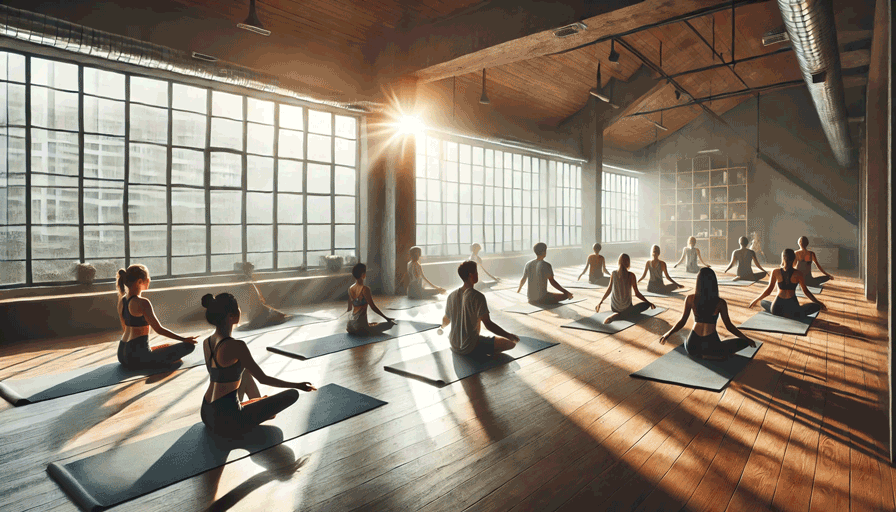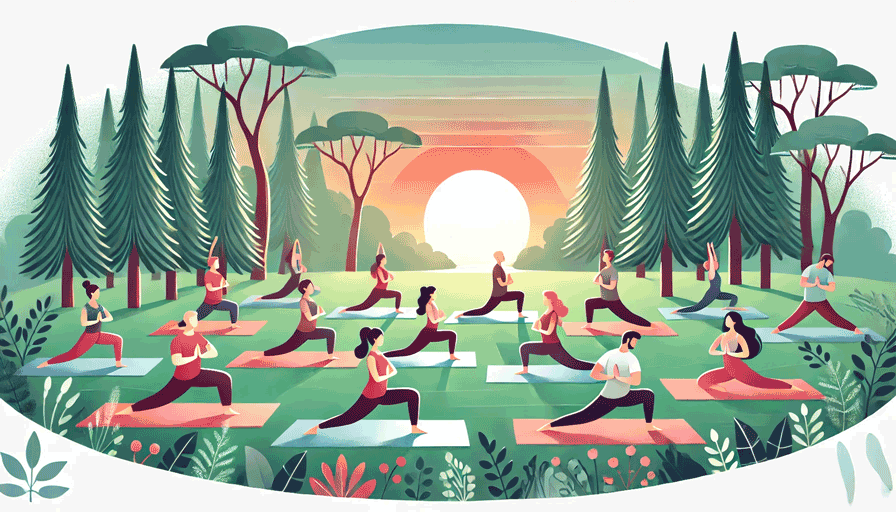Are you torn between starting yoga or Pilates? Both practices offer excellent health benefits but differ in many ways. Understanding these differences will help you make an informed decision and find the best fit for your fitness journey. Let’s dive into the unique aspects of yoga and Pilates by exploring their history, core principles, and benefits.
Problem: Difference Between Yoga and Pilates
Many people are confused about whether to choose yoga or Pilates. They might not understand what each practice entails, how they differ, and which will best meet their fitness needs. This confusion can be frustrating and may prevent people from beginning a fitness routine that could benefit their health and well-being.

Agitation
Picture feeling stuck in your fitness routine, uncertain if you should be stretching on a yoga mat or performing controlled movements in a Pilates class. You want to enhance your flexibility, strength, and mental clarity, but the variety of options overwhelms you. What if you choose the wrong one and miss out on potential benefits? This uncertainty can dampen your progress and motivation.
Solution
Let’s clarify the distinctions and similarities between yoga and Pilates. Understanding their origins, techniques, and benefits allows you to make a confident choice that aligns with your fitness goals and lifestyle.
The Origins
Yoga
Yoga is an ancient practice that began in India over 5,000 years ago. It combines physical postures, breathing exercises, and meditation to create a holistic approach to health and well-being. “yoga” means “union” in Sanskrit, symbolizing the integration of mind, body, and spirit. The main goal of yoga is to achieve balance and harmony within oneself and with the world.
Pilates
Pilates is a relatively modern discipline developed in the early 20th century by Joseph Pilates. This method focuses on core strength, stability, and controlled movement. Originally called “Contrology,” Pilates was designed to help rehabilitate injured soldiers and dancers. Its emphasis on precise movements and alignment makes it popular for physical therapy and overall fitness.
Core Principles
Yoga
Yoga includes a variety of styles, each with its focus and intensity. However, some fundamental principles are common across most yoga practices:
- Breath Control (Pranayama): Proper breathing techniques are essential in yoga. They help to calm the mind and improve concentration.
- Postures (Asanas): Yoga poses aim to increase flexibility, strength, and balance. They range from gentle stretches to challenging contortions.
- Meditation (Dhyana): Yoga incorporates meditation to foster mental clarity and reduce stress.
- Ethical Guidelines (Yamas and Niyamas): Moral codes and personal observances guide behavior and lifestyle.
Pilates
Pilates is based on six core principles, each designed to enhance physical fitness and body awareness:
- Concentration: Focus on each movement to maximize its effectiveness.
- Control: Perform exercises with deliberate, controlled motions to prevent injury and build strength.
- Centering: Strengthen the core, or “powerhouse,” which includes the abdominal muscles, lower back, hips, and buttocks.
- Flow: Move with smooth, continuous motions to improve fluidity and grace.
- Precision: Emphasize proper form and alignment to achieve the best results.
- Breath: Use breathing techniques to enhance movement efficiency and relaxation.

Techniques and Workouts
Yoga
Yoga offers a diverse array of styles, catering to different fitness levels and preferences. Some popular styles include:
- Hatha Yoga: A gentle introduction to basic yoga poses and breathing techniques.
- Vinyasa Yoga: A dynamic, flowing style that synchronizes breath with movement.
- Ashtanga Yoga: A rigorous, structured practice with a set sequence of poses.
- Bikram Yoga: Performed in a heated room, this style consists of 26 specific poses.
- Yin Yoga: Focuses on deep stretching and holding poses for extended periods.
- Restorative Yoga: Uses props to support the body in relaxing poses, promoting deep rest.
Pilates
Pilates workouts can be performed on a mat or using specialized equipment like the Reformer, Cadillac, and Wunda Chair. There are two main types of Pilates:
- Mat Pilates: This form of exercise utilizes body weight and simple props (e.g., resistance bands and Pilates rings) to perform exercises on a mat.
- Equipment-based Pilates involves apparatus that provides resistance and support, allowing for a broader range of exercises and more targeted muscle engagement.

Benefits
Yoga
The benefits of yoga extend beyond physical fitness, offering holistic improvements to overall well-being:
- Flexibility: Regular yoga practice increases flexibility and range of motion.
- Strength: Many yoga poses build strength, particularly in the core, legs, and arms.
- Balance: Yoga enhances balance and coordination through poses that challenge stability.
- Stress Reduction: Combining breath control and meditation helps reduce stress and promote relaxation.
- Mind-Body Connection: Yoga fosters a deeper awareness of the body and mind, encouraging mindfulness and self-reflection.
- Improved Posture: Regular practice can correct posture issues and alleviate related pain.
Pilates
Pilates is mainly known for its focus on core strength and stability, but its benefits are far-reaching:
- Core Strength: Pilates targets the core muscles, improving strength and stability in the abdomen, lower back, and pelvis.
- Muscle Tone: The precise, controlled movements help tone and sculpt muscles without adding bulk.
- Flexibility: Pilates exercises gently stretch muscles, enhancing flexibility and joint mobility.
- Posture: Emphasis on alignment and control improves posture and reduces the risk of injury.
- Rehabilitation: Pilates is often used in physical therapy to aid recovery from injuries by strengthening and stabilizing muscles.
- Body Awareness: Pilates encourages mindfulness of movement and posture, improving overall body awareness.
Which Is Right for You?
Choosing between yoga and Pilates ultimately depends on your personal goals, preferences, and physical limitations. Here are some considerations to help you decide:
Yoga Might Be Right for You If:
- You seek a holistic practice incorporating physical, mental, and spiritual elements.
- You want to improve flexibility, balance, and stress management.
- You enjoy a variety of styles and intensities, from gentle to vigorous.
- You are interested in meditation and mindfulness.
Pilates Might Be Right for You If:
- You are looking to build core strength and improve posture.
- You prefer structured, controlled movements and precise techniques.
- You need a low-impact workout that can aid in injury rehabilitation.
- You enjoy using equipment to enhance your exercise routine.
Conclusion
Both yoga and Pilates offer unique benefits that enhance your fitness and well-being. By understanding each practice’s core principles, techniques, and advantages, you can make an informed decision that aligns with your goals. Whether you choose the holistic approach of yoga or the precise movements of Pilates, incorporating either practice into your routine can lead to a healthier, more balanced life.






